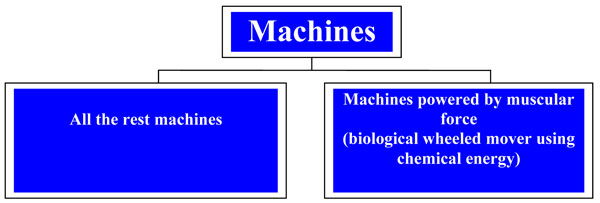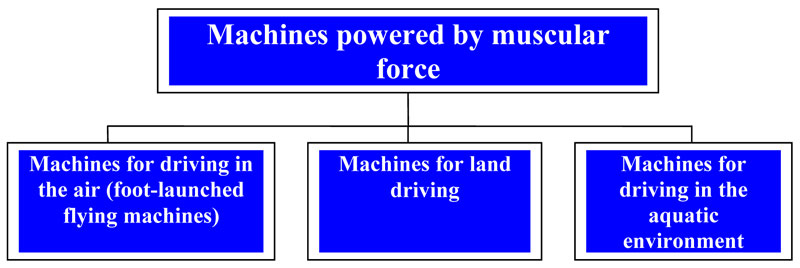The concept «bicycle» in theory and methodology of cycling sport
Фотографии:
ˑ:
M.M. Kovylin, associate professor, Ph.D.
V.I. Stolyarov, professor, Dr.Phil.
Y.I. Nedotsuk
Russian state university of physical culture, sport, youth and tourism (SCOLIPC), Moscow
Key words: bicycle, torque effect, wheeled mover, internal force, definition, concept, logics, cycling.
Problem's formulation and methodology of its solution. Formulation of any scientific theory requires a definition of its basic concepts in the first place. This logical procedure allows the differentiation of an object, which is being analysed in a given theory, from other objects; the clarification of the scope or the content of the corresponding concept; as well as the signification of a term that has already been introduced into the scientific terminology or the determination of a new term's meaning. The definition of the terms makes possible to achieve accuracy, rigidity, and clarity with regards to their usage.
The concept "bicycle" is one of the main concepts of the theory of cycling. An analysis reveals different definitions of the term "bicycle", which are rarely science-based. Thus, within the regulations of International Cycling Union ("UCI"), the following definition is given: "Bicycle is a machine consisting of two wheels of equal diameter, with the front one functioning as guide, and the rear one powered by a system comprising a connecting rod with pedals and a chain" [8]. However, more definitions of this concept exist in scientific literature. The bicycle is understood as: "A two-wheeled or three-wheeled machine used for riding, powered by pedals" [1]; "A two-wheeled or three-wheeled machine used for riding, powered by one's legs with the help of pedals" [2]; "A two-wheeled machine as means of transport, consisting of a frame, two wheels, handlebars and connecting rods intended to transfer muscular effort from the legs to the wheels with pedalling" [3], etc.
In the present situation as well as in others, when there is a plethora of definitions for a particular concept, the methodology of its introduction, assessment and standardization are in the forefront. Normally, the abidance by the rules of the concept's definition, which is necessary for the suggested methodological approach (the definition must be precise and clear; must not only be privative; should not contain a tautology, vicious cycle, etc.) for the definition to be effective, does not fully resolve the problem. In consequence, regarding the various definitions mentioned above, these rules are not violated.
When it comes to fully address the matters in question, two logic-methodological principles are especially significant, grounded on the works of one of this article's authors:
1) demarcation of substantive and terminological aspects of definition;
2) analysis of not a single concept, but of the system of the concepts related to it, which are needed for the representation of the whole variety of fields of study [4, 5, 6, 7.].
Implementation of this methodology for the introduction of the concept "bicycle"
The methodology for the introduction of the concept "bicycle" is being designed in conformity with the principles in this article. First of all, the issue of identification and representation of all the objects' diversities (with their immanent features) of the field of study in the system of the conforming concepts stands on the basis of the substantive analysis: a) objects, which are fixed in various effective definitions of the introduced concepts; b) other objects of this field. Only after that does a terminological problem come to the forefront; with which terms to designate the marked objects and also for the designation of which of them to use the term "bicycle" (considering the history of this term's introduction, the language practice of its use today, etc.).
The analysis of the different definitions of the concept "bicycle" and of those features, which are attributed to the bicycle accordingly, shows that it is an element that belongs to a broad area of objects that includes various mechanisms or their combination implementing the definite expedient movements for the conversion of energy, the change in shape, the characteristics, the status or position of the subject work, the gathering, the transference, the storage, the processing and use of information, etc. For the denotation of this type of object, as a general rule, the term "machine" is used [Fr. machine; Lat. machina: construction]. Therefore, regarding the definition of the concept "bicycle", a classification of various types of machines is needed, as well as a segregation of such a machine among them, for the designation of which it is wise to use the term "bicycle".
Classification of machines
To start, by choosing the type of classification of wheeled mover and used energy, machines can be divided into two groups (see fig. 1.)

Fig. 1. Classification of machines by types of wheeled mover and used energy.
The various definitions of the bicycle, more often than not, refer to the machine that is powered with the help of muscular force. Thus, it is this group of machines that is of primary interest. Since such machines are also diverse, their classification is required as well. It can be carried out in various bases.
Depending on the environment a powered-by-muscular-force machine moves, it can be classified as follows (see Fig. 2.).

Fig. 2. Block diagram for the classification of machines powered by muscular force, depending on the environment in which they are driven
The analysis of the history of the term "bicycle" and its modern use shows that, as a rule, they are designated as merely machines, powered by muscular power and used for the purpose of travelling by land.
The classification of these machines on the basis of construction form enables highlighting some of their types, as follows:
1) foot-launched or hand-launched machines driven on rails;
2) machines with horizontally located frame;
3) machines in which the wheels serve as functional supports, with the legs playing the role of "wheeled mover";
4) machines in the form of manual wheelchairs.
But for the denotation of these types of machines it's hardly likely to use the term "bicycle" effectually. With a glance to the practices of common conversational and scientific language, it's justifiable to use the term "trolleys" (or "rail bikes") for the denotation of the first group's machines, the term "pedal cars" for the second group, "scooters" for the third one and "manual wheelchairs" for the fourth group.
But among the machines, powered by muscular force and used for travelling by land, it's possible to segregate another of their types for which, once again in the view of the practices of common conversational, athletic, as well as scientific language, it's effectual (justifiable) to use the term "bicycle".
Those types of the aforementioned machines are characterized by the following main features:
Ø vertically located frame;
Ø wheel (or a number of wheels);
Ø a system of levers and mechanisms intended for management and creation of the torque effect on a wheeled mover.
Let us explain the terms used in this definition.
The phrase "system of levers and mechanisms" includes a list of the main components of a bicycle, such as the levers (connecting rods with pedals), the drive chain with the leading and driving gear wheels torque transfer by gear wheels (systems and cassettes), the steering wheel, etc.
The word "control" is understood in a broad sense, including functions such as braking, steering, balancing, etc.
The word "wheeled mover" is used to specify the parts of the bicycle, which directly power it. For example, regarding the skateboard, the wheels act as a functional support, but the legs as wheeled movers.
The word "support" is used to specify the function (role) of the wheel (wheels). For example, as to a water bike, its body structure in the form of pontoons is its support, while its wheeled mover is the wheel with its blades.
The phrase "torque effect" attests the transfer of "internal force" on that part of the device (machine), which could potentially act as a wheeled mover.
The phrase "internal force" is important since the forces powering various devices can be internal and external. For instance, when a person moves (rolls) a bicycle near himself, external forces make their appearance. And, when he rides the bicycle, internal forces are applied.
Conclusions. Proceeding from the above, the concept “bicycle” can be defined as a vehicle, having one or several wheels, serving a support and fixed by axes to a vertical frame, linkage and gears to control and render a torque effect on a wheeled mover by internal muscle force.
The specifics and value of the definition of the quoted notion is not just in its significant distinction from other its definitions and its efficiency – it can precisely and unambiguously distinguish bicycle from numerous other vehicles.
The core consists in the following:
1) the subjected definition of the concept “bicycle” is scientifically substantiated using the stipulated above logical-methodological principles of introduction, assessment and unification of notions;
2) in this approach conceptual, but not terminological issues of the definition of this notion are priority and the notion itself is taken within the conceptual framework, including a variety of objects of the studied area;
3) such a methodology of introduction and substantiation of the notion “bicycle” promotes avoiding of useless terminological debates when designing the theory of cycling sport and focusing on conceptual issues and taking into account the place of bicycle in the system of other vehicles via the system approach.
References
- Bonivel, L. Mechanical locomotions: sources, facts, dates / L. Bonivel. – Paris, 1935. (In Russian)
- Gorsky, D.P. Definition (Logicomethodological problems) / D.P. Gorsky. – Moscow: Mysl', 1974. – 310 P. (In Russian)
- Efremova, T.F. Russian explanatory dictionary. – Moscow: Russkiy yazyk, 2000. (In Russian)
- Ozhegov, S.I Russian dictionary /Ed. by MC Academy of Sciences of the USSR N.Yu. Shvedova. – Moscow, 1987. (In Russian)
- The rules of International Cycling Union "UCI" division 2, §1 (In Russian)
- Stolyarov, V.I. Methodology of introduction, assessment and unification of concepts // Vestnik Moskovskogo universiteta. Series 7, Philosophy. – 2007. – № 1. – P. 9–23. (In Russian)
- Stolyarov, V.I. The philosophy of sport and human corporality: monograph. In 2 books. / V.I. Stolyarov. – Moscow: Universitetskaya kniga, 2011. – Book 1. The introduction to the world of sports philosophy and human corporality. – 766 P. (In Russian)
- The explanatory dictionary of sports terms. – Moscow: Fizkultura i sport, 1993. (In Russian)
Author’s contacts: 8-499-166-53-39


